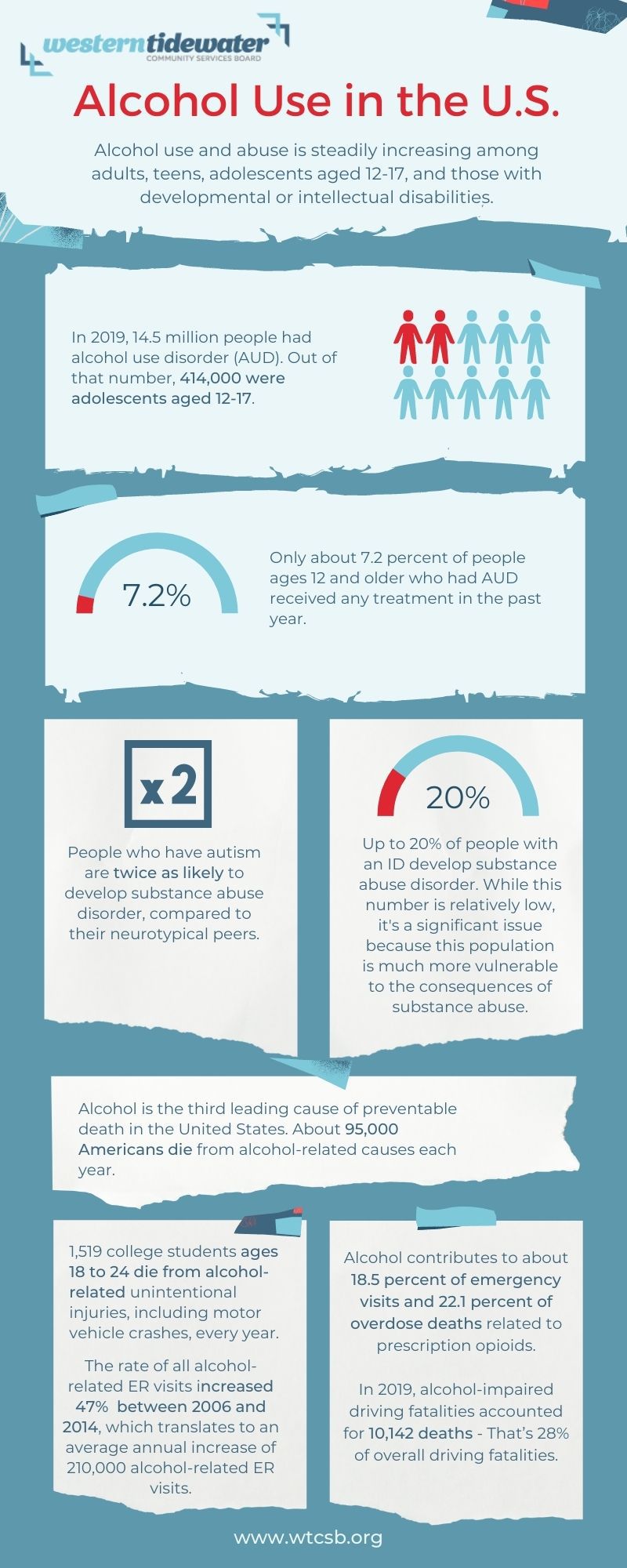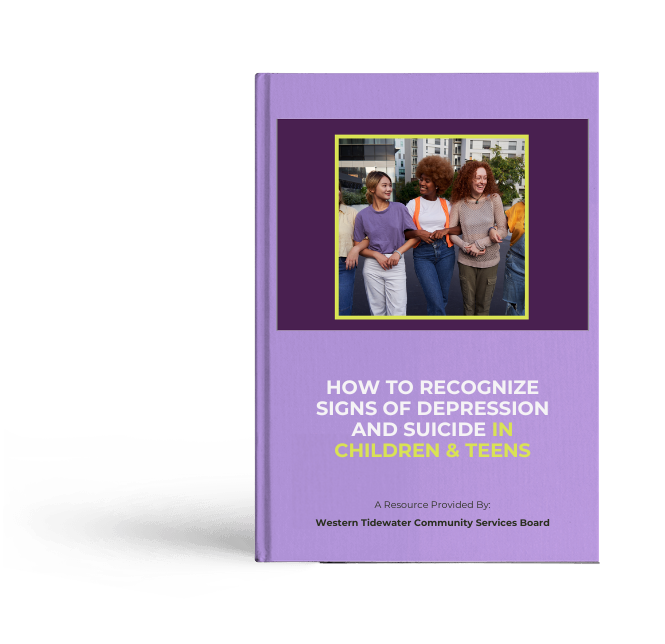April is Alcohol Awareness Month. Learn more about how to get involved here.
Alcohol use is something that’s become so ingrained in our culture – movies and tv portray alcohol use, especially teen alcohol use, as something common and expected. And while alcohol is completely legal for adults 21 and over, it’s ironically one of the more dangerous substances that people use.
Alcohol abuse and alcohol-related accidents are behind many deaths every year in the United States. We all more or less know this, but when you actually see the numbers, it’s unsettling.
Alcohol Use is Becoming More Common Among Both Adults and Teens
Alcohol is the most used substance by both youth and adults in the United States. According to the National Institute of Health’s 2020 Monitoring the Future Survey, 55.3 percent of high school seniors responded that they had used alcohol in the past year. The 2019 National Survey on Drug Use and Health (NSDUH) found that 85.6 percent of people ages 18 or older reported that they drank alcohol at some point in their lifetime; 69.5 percent reported that they drank in the past year; 54.9 percent reported that they drank in the past month.
Alcohol-Related ER Visits and Deaths in the U.S.
Alcohol is the third leading cause of preventable death in the United States. About 95,000 Americans die from alcohol-related causes each year.
The most recent statistics from the National Institute on Alcohol Abuse and Alcoholism (NIAAA) estimate that 1,519 college students ages 18 to 24 die from alcohol-related unintentional injuries, including motor vehicle crashes, every year. In 2019, 25.8 percent of people ages 18 or older reported that they engaged in binge drinking within the past month.
Binge drinking for women means having four or more drinks on one occasion (in a 2-3 hour time period), and for men, it’s five or more drinks on one occasion. The NSDUH also found that 6.3 percent of respondents 18 and older had engaged in heavy alcohol use in the past month. Heavy alcohol use is defined as binge drinking on five or more days in the past month.
Another concern is high-intensity drinking, which refers to consuming alcohol at levels that are two or more times the gender-specific binge drinking thresholds. For women, that’s having 8 or more drinks on one occasion, and for men, it’s 10 or more. Those who met this threshold were found to be 70 times more likely to have an alcohol-related emergency room visit, and those who consumed alcohol at three times the gender-specific binge thresholds were 93 times more likely to have an alcohol-related emergency room visit.
The rate of all alcohol-related emergency visits increased 47 percent between 2006 and 2014, which translates to an average annual increase of 210,000 alcohol-related ER visits. Alcohol contributes to about 18.5 percent of emergency visits and 22.1 percent of overdose deaths related to prescription opioids. In 2019, alcohol-impaired driving fatalities accounted for 10,142 deaths – That’s 28 percent of overall driving fatalities.
Alcohol Use Disorder in the U.S
Alcohol use disorder (AUD) is marked by compulsive drinking, loss of control over alcohol use, and negative emotions when not drinking. AUD can be mild, moderate, or severe. Recovery is possible regardless of severity. According to the 2019 NSDUH, 14.5 million people ages 12 and older had AUD. Of this number, an estimated 414,000 were adolescents aged 12 to 17. 8.1 percent of adults ages 18 to 22 met the criteria for past-year AUD.
Seeking Treatment for Alcohol Abuse
Only about 7.2 percent of people ages 12 and older who had AUD had received any treatment in the past year. Only about 7.3 percent of adults ages 18 and older who had AUD had received any treatment in the past year. People with AUD were more likely to seek care from a primary care physician for an alcohol-related medical problem, rather than specifically for drinking too much alcohol.
Alcohol Use in Individuals with Autism or an Intellectual or Developmental Disability
Alcohol Use and Intellectual and Developmental Disabilities
A 2004 study found that between 7% and 20% of people with an intellectual disability develop substance abuse disorder. A study published by Cambridge University Press found that although the prevalence of alcohol use disorders in people with intellectual disability (PWID) appears to be low, it is a significant issue, because this group can be more vulnerable to the adverse effects of alcohol and it is likely that many PWID who have alcohol use disorders are not being identified.
Those with intellectual disability (ID) suffer disproportionately from substance use problems, largely because of a lack of empirical evidence that could help to inform prevention and treatment efforts for them. People with ID/DD do not typically have access to the same education and prevention resources that their typically-developed peers receive. People with ID/DD often suffer more severe consequences from alcohol abuse, including problems with the criminal justice system, victimization while under the influence, increased cognitive problems, health effects, and more.
Alcohol Use and Autism
For a long time, the medical community assumed that it wasn’t likely that autistic people could have a substance abuse problem, but recent studies have shown that the rates of substance abuse disorder among people with autism may be higher than previously thought. Alcohol abuse can be a coping mechanism for autistic people living in a neurotypical world, many of whom are undiagnosed. One study found that autistic people who use alcohol or other drugs are nearly nine times more likely to use these substances to mask symptoms, including those related to autism. Another study found that the risk of substance abuse in people with autism is double that of people who are not autistic.
Autism is a spectrum, so different autistic people may exhibit alcohol abuse symptoms in different ways or some may be better at covering up their symptoms. Some autistics who abuse alcohol may appear more like their neurotypical peers when drinking alcohol, making it harder for others to see and diagnose the problem.
Related: The importance of Finding a Therapist That Understands Neurodiversity
Why Awareness is So Important
Alcohol abuse is often overlooked because alcohol use is so common. It’s seen as just part of our culture, and even binge drinking and “losing control” while drinking is often seen as a part of the life experience, even as a type of coming-of-age story for teens and college-aged youth.
But the consequences for individuals, and for our country at large, are obvious. Nearly 15 million Americans are suffering from alcohol addiction. About 400,000 of them are aged 12-17. Almost 100,000 Americans die each year from alcohol-related causes. Raising awareness about alcohol abuse is a major step in combating it. By bringing attention to the level of alcohol use and abuse happening and the symptoms of alcohol use disorder, we can bring more attention to this widespread problem.
Let’s Move Forward, Together
If you or someone you know is struggling with alcohol overuse or abuse, don’t hesitate to get help! We are here for you, anytime 24/7! If you’re experiencing a crisis, call our crisis line at (757) 925-2484 or make an appointment for same-day access online now.
Click to enlarge infographic.
Share the infographic! Click to get the embed code.
<a href=”https://www.wtcsb.org/treating-alcohol-use-disorder-in-adults-teens-and-people-with-intellectual-or-developmental-disorders-why-awareness-matters“ target=”_blank”><img src=”https://www.wtcsb.org/wp-content/uploads/2022/04/Alcohol-Use-in-Adults-Teens-those-with-ID-or-DD-Infographic.jpg” /></a









